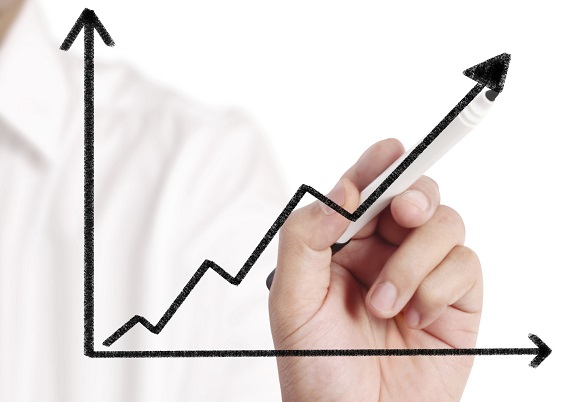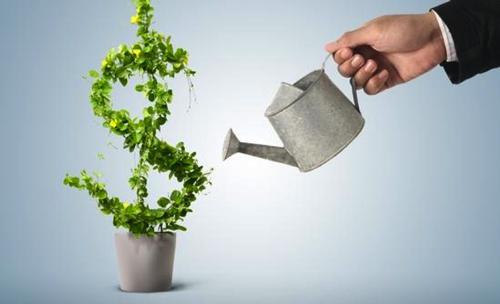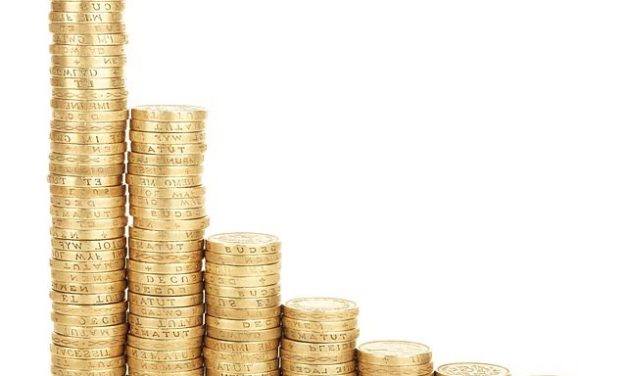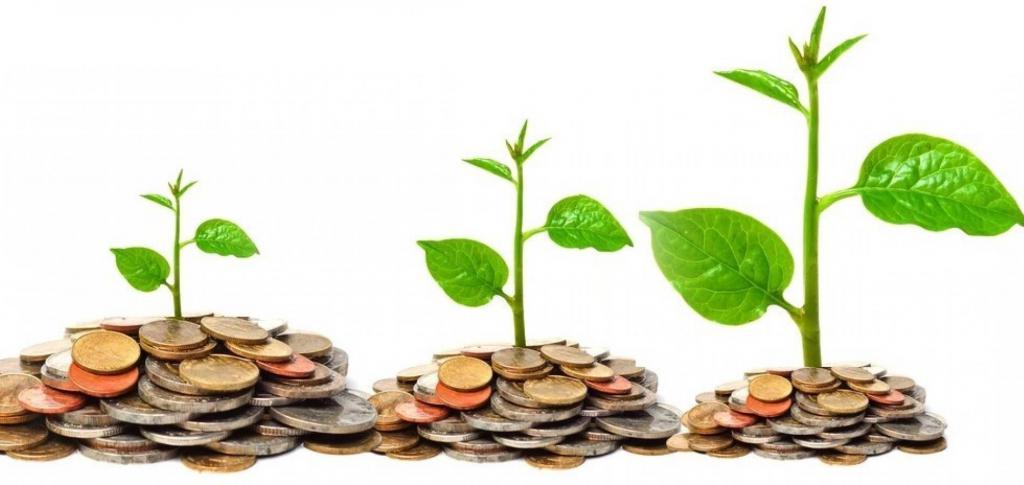The article will talk about the types of financial stability. We will consider the main types, find out their features and distinguishing features. This is not only very interesting, but also useful, because thanks to the information received it is possible to comprehensively consider a particular enterprise from the point of view of its sustainability.
What are you talking about?
Before discussing the types of financial stability, it is necessary to understand the concept itself. So, financial stability is a state of affairs in which the company has enough money in all its accounts to guarantee and demonstrate full solvency. If an enterprise has a sufficiently strong and developed management system, its management will always be aware of the level of change of various sources of income generation. This will allow to control and influence the process in order to guarantee and ensure solvency.

What is needed for calculation?
Determining the type of financial stability is impossible without a coefficient, which is calculated by a number of indicators. It is called - the coefficient of stability or stability. He is able to clearly demonstrate how stable the enterprise or company is, at what level it can guarantee the solvency of its partners.
So, consider the indicators that are necessary to calculate the coefficient:
- coefficient of autonomy or independence;
- coefficient showing the level of financial dependence;
- ratios showing the solvency of debtors;
- bankruptcy signs expressed in numerical format;
- asset liquidity level;
- additional calculations performed to obtain accurate results.
It is believed that one can reliably determine the type of financial stability even from two main indicators - the level of liquidity and solvency. It is these indicators that have the greatest impact on the type of stability.
Financial market
When analyzing this topic, you can notice that the financial market has a great influence on the stability level of a company. It is from its organization and quality that the movement of certain resources that the company uses to conduct business operations depends. In other words, the financial situation of individual companies and enterprises will largely depend on how developed and strong the financial market is.

In addition, do not underestimate the financial market. This is a very powerful tool that can quickly change the situation. So, in the hands of the state, he solves many problems. The financial market is used to solve various macroeconomic problems. This may include the regulation of the level of money in circulation. For example, in the short term, the state can have a significant impact on inflation if it regulates the issue and variety of securities. As a result, this will naturally affect the performance and stability of enterprises.
What else is affecting?
I must say that it is possible to determine the type of financial stability of an enterprise using and analyzing absolute and relative indicators, from which we can draw a lot of useful information. These indicators are very important not only for individual companies, but also for government agencies that guide the country's economic development. Thus, the results obtained are effectively applied in practice and allow achieving more efficient work in business and financial operations.
Autonomy or independence of the enterprise
As we already know, determining the type of financial stability of an enterprise is impossible without the use of specific indicators. One of them is an indicator that demonstrates the level of autonomy.
It is at a ratio of the capital of the enterprise and all its reserves to the total assets. To calculate this indicator, you need to get information from the balance sheet.

To determine the type of financial stability of the organization, this indicator is extremely important, since it can show what proportion of assets is the most useful and important part of our enterprise. In addition, we see exactly the share of assets that an enterprise or company can cover on its own, that is, from its own funds. In other words, we immediately see how the company is able to cover its assets, pay bills. You need to understand that it is quite normal when some of them are covered from the calculation of the funds that we borrow. This is not only normal, but also useful, because world practice shows that it is much more profitable to work on a 50/50 basis (when half of the capital is own and half is borrowed).
Particular and close attention in the study of the type of stability is given to this indicator by banks and investment companies. That is, all those organizations that sponsor us, lend. The higher the rate of autonomy, the more likely the company will pay off the debt at the expense of its own funds. If you rely only on borrowed funds, then you can wait a long time to pay for a loan.
So, we can draw a small conclusion that the higher this indicator, the more free the company is from the influence of external factors.
Financial addiction
An analysis of the type of financial stability also occurs by studying the indicator of dependence, which is the inverse of what you examined above. We calculate it using the ratio of all financial resources to the total number of sources of our assets.

This ratio is very important, because it shows how dependent the enterprise is on certain external companies, that is, whether it is independent in its finances. The indicator also shows how much money was raised per 1 ruble. Still financial dependence demonstrates how quickly and efficiently an enterprise can liquidate its assets in order to fully or at least partially pay off a debt.
Solvency and liquidity
The level of liquidity, solvency and autonomy is a three-component indicator of the type of financial stability, which is used to obtain quick and accurate results. We considered the last component of this formula above, and now let's talk about the two remaining ones.
Liquidity and the ability to pay are considered one of the most important criteria for assessing the financial condition. In order to calculate these indicators, you can resort to two different methods:
- studying the liquidity of the assets themselves, that is, the company's property
- the study of balance sheet liquidity.
If everything is transparent with the first method, then the second should be explained separately. It allows you to correctly group balance sheet items in order to identify the ratio and proportionality of an asset and liability. In addition, it provides an opportunity to conduct a qualitative comparative analysis, as well as carefully analyze business activity indicators.
Bankruptcy
According to the legislation of the Russian Federation, a bankruptcy case can be considered only if two conditions are met:
- on the part of a legal entity, financial claims exceed 300 thousand rubles, and on the part of an individual - 500 thousand rubles;
- the company is a debtor for more than 3 months.
These are very sparing norms, since earlier, in order to initiate bankruptcy proceedings, it was enough that the company had an incorrect or inaccurate balance sheet structure.
Other important indicators
Separately, one should consider a number of indicators that can indirectly illuminate the situation regarding the type of financial stability of the enterprise.

There is an index that shows how the company is provided with its own working resources. This is a significant indicator, which demonstrates just your own, and not a borrowed share in working capital.
It is calculated by the ratio where the difference between the company's own funds and the adjusted non-current assets is recorded in the numerators, and the total amount of current assets is indicated in the denominator.
An indicator showing the ratio of receivables to assets. It demonstrates how much we owe and what is the share of debt in total assets. This is also important, as things are not good if the assets consist primarily of receivables.
Kinds
Now let's talk about the very types of sustainability that exist.
- The absolute type of financial stability. It is characterized by the fact that all stocks that belong to the enterprise or organization, can be fully covered using current assets. In other words, we can say that the company is not dependent on any external creditors, it can pay payments. Also, this system is characterized by the fact that it does not have any failures in internal and external financial discipline. Moreover, absolute financial stability is described by inequality. In it, the company's working capital exceeds the sum of costs and reserves. I must say that in real life this type of financial stability is extremely rare.
- Normal financial stability. In such a situation, the company covers inventories using working capital and borrowed funds. This type of stability can be described by inequality, in which the sum of current assets and liabilities is greater than stocks and costs. At the same time, stocks and costs are greater than working capital. From the point of view of management, this situation is most favorable for the enterprise.
- Unstable financial situation. It is characterized by the fact that the company has difficulty with solvency. At the same time, it can restore equilibrium if it accelerates inventory turnover, reduces receivables and replenishes its own funds. An unstable financial position is manifested in failures in financial discipline, irregular receipt of money in a current account, unstable profitability, deviation from the financial plan.
- Crisis financial situation. It is characterized by the fact that the company is dependent on everything and can become bankrupt at any time. All monetary assets, securities and even receivables cannot cover the accounts payable of the enterprise.
Three-component type of financial stability
It is based on a comparison of the sources of stocks and expenses with their level of security.

Indicators:
- Excess or shortage of current assets.
- Excess or lack of loan funds.
- Surplus or shortage of the total amount of the main sources for the formation of own costs and stocks.
It is on the basis of these three indicators that a three-component indicator can be derived. But at the same time, if we observe a surplus, then the indicator is indicated by unity, and when there is a deficiency, the situation is indicated by zero. Thus, we can conclude that the absolute type of financial stability is 1 1 1, since here everything speaks of excess. If we want to present normal stability using this indicator, then it will look like this - 0 1 1. An unstable financial condition on the part of the three-component indicator will look like this - 0 0 1, and the crisis situation - 0 0 0.
Classification
According to the balance sheet, it is not difficult to determine the type of financial stability, because we can immediately see the current condition of current assets and loans, receivables and payables. However, one can consider the type of financial stability on the basis of different criteria, for example, by time, structure, nature of occurrence, etc.

We will consider the main classifications that provide the most qualitative and useful data for analytics.
By time:
- short-term stability is characterized by the fact that it lasts for a short time;
- medium-term financial stability characterizes the state of the enterprise at some point when exposed to real factors;
- long-term financial stability characterizes the state of the company for a long time, it practically does not change from the type of management and the economic cycle.
By structure:
- formal stability, which is created artificially and stimulated by the state;
- competitive or real stability, which is characterized by economic productive activity in conditions of real competition.
By management methods:
- conservative stability arises as a result of the company pursuing a conservative policy, that is, it avoids risks and prefers cautious actions;
- progressive stability is characterized by the fact that the company uses advanced methods, seeks to conquer new markets and leadership.
By content:
- strategic stability is characterized by the fact that a company can create and maintain important market advantages for a long time in an ever-changing environment;
- economic is characterized by the fact that the company focuses on economic factors and seeks to develop intensively through the use of new technologies;
- social stability allows you to dynamically and proportionately develop the economic and labor side of the company.
If possible regulation:
- open financial stability is characterized by the fact that it lends itself to regulation and change;
- Closed financial stability is practically uncontrollable; it does not change its effective indicators as a result of changes in external conditions.
In amplitude:
- Cyclic stability is characterized by the fact that it can be repeated after any certain periods. Moreover, it is stimulated by external or internal factors.
- Translational stability shows that the enterprise can be in equilibrium for a certain time and respond to market changes. At the same time, it does not substantially change from the inside and practically does not leave its equilibrium state.
At the place of origin:
- local stability is typical for enterprises of a certain region or region;
- global sustainability describes a country-wide situation.
By scope:
- planned stability is achieved gradually and clearly according to plan;
- unplanned stability can be achieved in contradiction to forecasting indicators.
To summarize, we note that we examined all types of financial stability, talked about the criteria for their assessment, and also paid great attention to the coefficients and indicators that affect the formation of the type of stability. This data is very important for economists and analysts, because it allows you to see the big picture and assess the appropriateness and effectiveness of the company.
